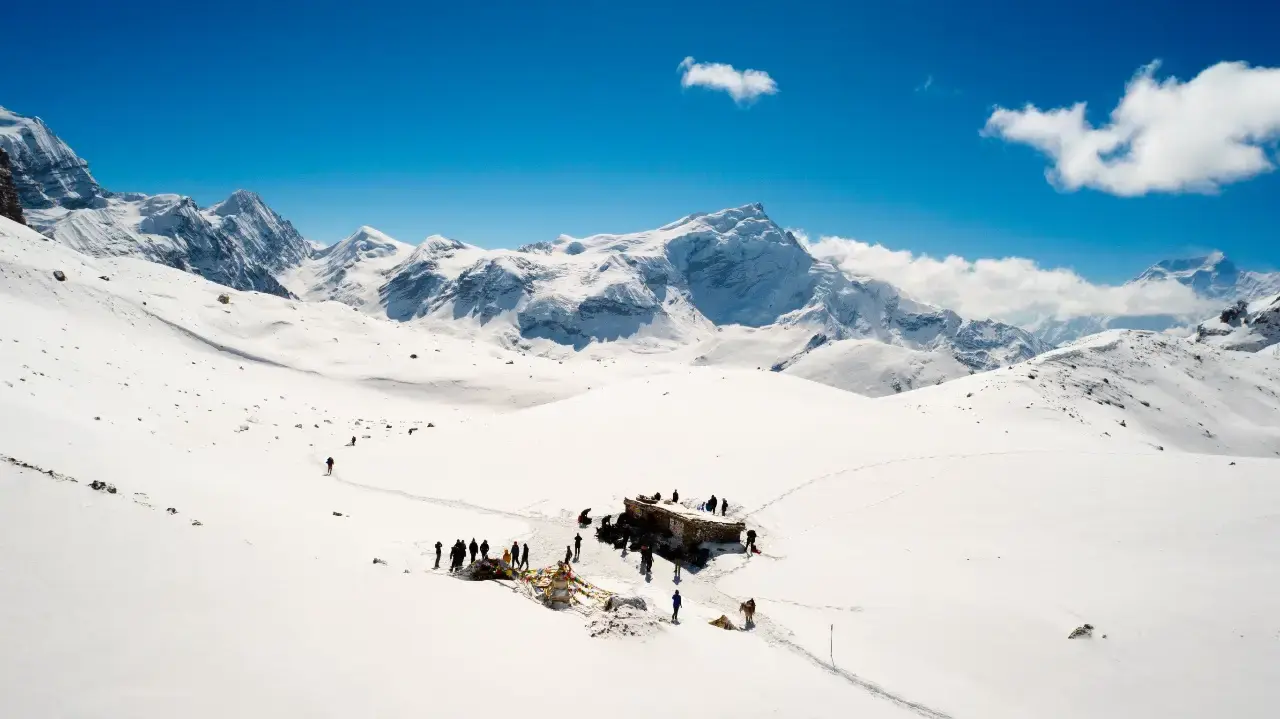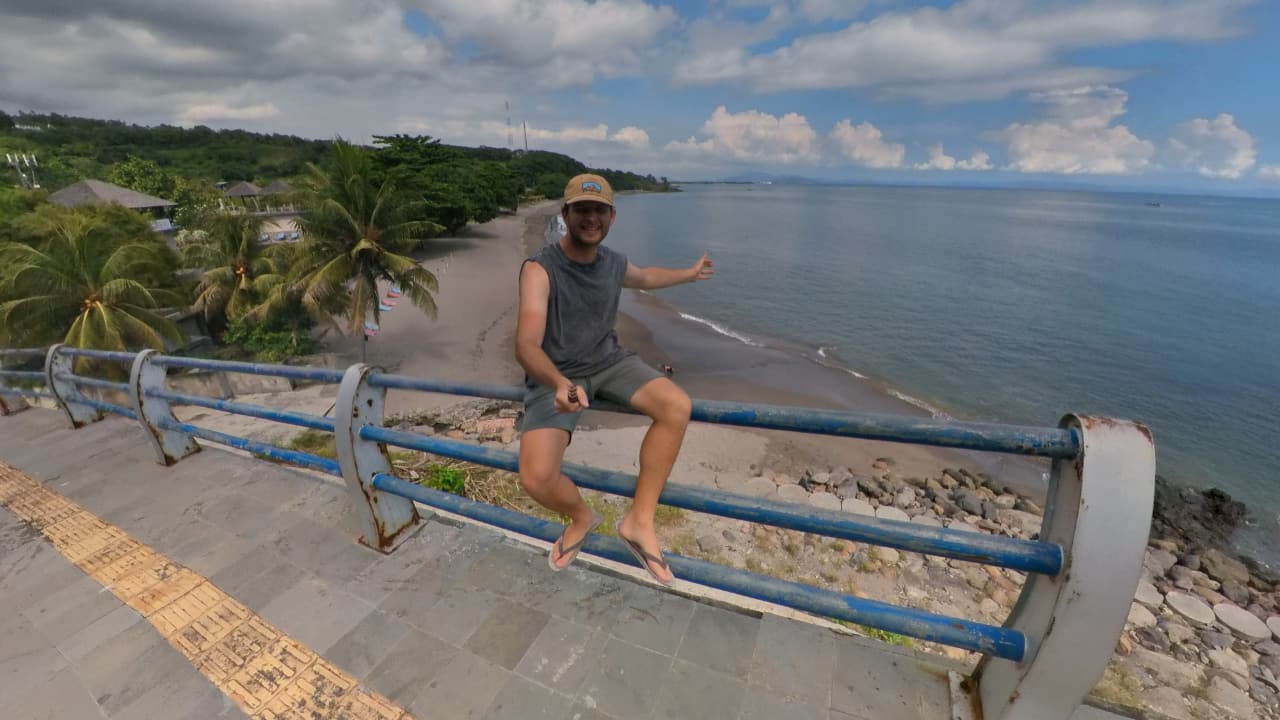
With 25kgs (55 lb) of camera gear on his back, filmmaker Josh Edwards reveals what it takes to walk and document the Annapurna Circuit for his latest series Notes from Nepal.
Attempting to walk the 130km of roads and trails around the world-famous Annapurna Circuit is a serious undertaking in and of itself. But attempting to film and document all of that at the same time? I’m not sure what I was thinking, to be honest. Notes from Nepal is a passion project and labour of love that’s taken over two years to complete and presented me with unique challenges as a filmmaker.
But these are the reasons we pursue passion projects – to learn and grow in our craft. Below, I’m giving you a bit of a breakdown on what it takes to film a documentary in such remote corners of the planet and a few lessons learned while shooting at the highest of altitudes.
Camera choices
When you’re shooting an expedition like this, you find yourself constantly walking a tightrope between quality and necessity. Ultimately, my gear choices stemmed from the need to capture great images that show off the true beauty of the Himalaya, while remaining small and compact enough for me to carry around while trekking for over two weeks.
For my main camera, I went with my sturdy, reliable Lumix GH5. From A-roll and B-roll to interviews and everything in between, the vast majority of Notes from Nepal is shot on the GH5. I’ve been shooting with this camera for over seven years now, so I know it inside out. It’s pretty much everything I need – a beautiful 10bit 4:2:2 4K UHD image packaged inside a very small, compact and weather-sealed body. The excellent IBIS also ensures I don’t need to bring a gimbal – everything aside from interviews was shot handheld.
As an added perk, the GH5 is more than capable of capturing beautiful photos too. I shot a fair few frames on my way around and used these in various promotional materials for the film. My go-to lens is the Olympus Zuiko 12-40mm f/2.8 pro. It’s constant aperture paired with a fantastic focal range (pretty much a 24-80mm when you do the conversion from micro-four thirds) is absolutely perfect for documentary work. It’s about the size of a can of coke and also has optical stabilisation. I’m going to go ahead and say it’s probably the best lens out there for a GH5.

Photo by Benjamin Harris
Next up, I had my Sony ZV-1 on hand to shoot PTCs (pieces to camera). The style of doc required me to “vlog” how I was feeling and our reactions to the environment. For me, the Sony ZV-1 remains the best vlogging camera on the market – it’s super small and lightweight, shoots in 4K and most importantly, comes with incredibly reliable auto-focus face detection that we know and love from Sony cameras.

Photo by Benjamin Harris
I’ll get into the Nepal-centric curiosities of drones below, but I did take my DJI Mavic 2 Pro. Despite being several years old, it’s still an incredibly reliable drone that captures beautiful imagery in 4K. On future trips, I’d probably be looking to upgrade to a smaller, newer DJI model that has the same output but comes in a much more compact, lighter, trekker-friendly package. The DJI Mini 4 Pro may be preferable here.
Talking of camera swaps, I also had a GoPro Max with me, primarily just to experiment with and play around. A lot of the 360 footage did make it into the series, but nowadays I’d much rather use my Insta360 X3 or X4, which I find to be better in pretty much every department.
Paperwork and permits
When it comes to the films I make at this stage, I’m a small, independent one-man band. That allows me to be nimble, adapt quickly and often fly (literally) under the radar. When it comes to permits and permissions, I’m often not on the hook in comparison to bigger productions with many people and moving parts.
In Nepal however, they take their convoluted drone laws incredibly seriously, even for the everyday trekker and tourist. I could write a whole (and quite frankly boring) article about what it takes to obtain the correct drone permits to fly legally in Nepal. Long story short, when I first trekked the circuit in 2022 I made a rookie error of just assuming it’d be okay to fly as a tourist. I was wrong. So, in 2023 I went back expressly for the purpose of capturing drone footage and, after many weeks of back and forth, finally obtained the permits.
Ultimately, the bureaucratic hassle did prove just about worth it when I came away with a bank of beautiful footage that really does emphasise the scale and grandeur of the Annapurna region in a way my other cameras simply can’t. The takeaway here is to always be prepared and get your permits and paperwork sorted well ahead of time. If I’d done my due diligence, I probably could’ve saved myself a lot of time and money.
(It was the perfect excuse to persuade my wife that I needed to go back for a second time).

Photo by Josh Edwards
Audio
When you’re up in the mountains at high altitudes you’re going to experience really strong winds. If you use the in-built mic on an exposed camera body, you’ll likely get horrendous audio as the wind rips across and renders it unusable.
To tackle this issue, I had the Rode VideoMic Pro Plus attached to my GH5 at all times – with a nice foam protector, great audio quality and long battery life, it’s the perfect partner for my camera. As for the interviews I shot along the way, I used the equally impressive Rode Wireless GO II lapel mics. Again, I’ve got the great audio quality expected from Rode packaged in a ridiculously small, lightweight profile. No wires. Perfect.
Batteries
While we’re talking about elements such as the wind it’s worth touching on how the cold temperatures affected my batteries. Up above 3,500m where the nights were well below freezing, I was having to store all of my camera (including drone) batteries inside warm yak wool socks and sleep with them under the covers with my body warmth. During the day, I’d keep the batteries on my body with hand warmers in the pockets to keep them warm enough to operate.
Even then, I was noticing a drop in performance and on the day of crossing Thorong La Pass (5,416m above sea level), my drone controller was dropping from 60% charge to 8% in 40 seconds.

Photo by Josh Edwards
Other gear
Lastly, I’ll touch on some other pieces of gear. I’ve been using the Peak Design Capture camera clip (V3) for many years and it’s never let me down. On the trek, it allowed me to have the GH5 to hand at a moment's notice, while freeing myself up for trickier parts of the walk where trekking poles were needed. I wouldn’t leave home without this.
As for the rucksack that the clip was mounted on and all of the above gear was carried in? Well, let’s just say you get what you pay for. I purchased a 50L Forclaz rucksack from Decathlon and it did the job but after a couple of rough weeks in the mountains, plastic clips were broken and there was fraying on various bag strap seams. That’s probably me overloading the thing, to be honest. I suspect that if I wanted a rucksack that’s truly up to this task, I’d need to be spending a lot more money.
Notes from Nepal is streaming now on YouTube.



Comments